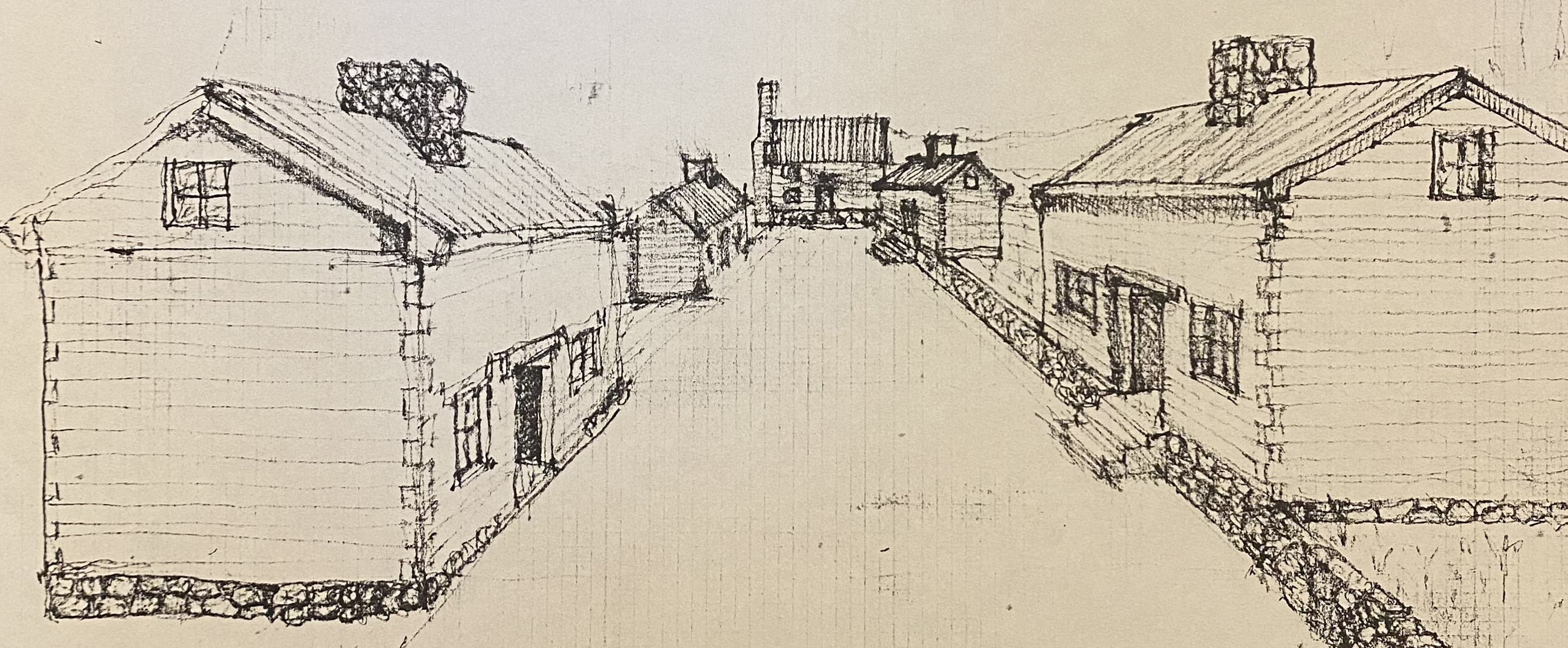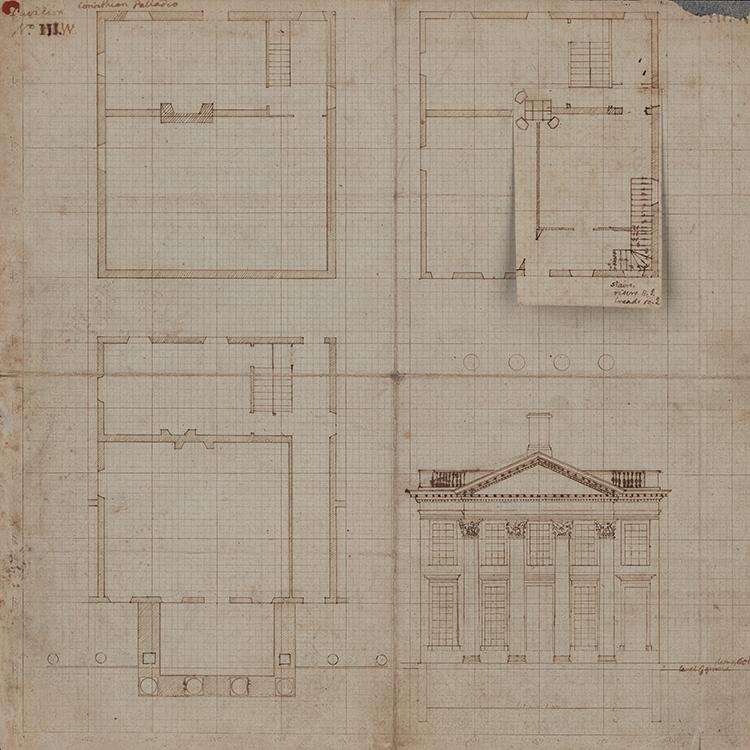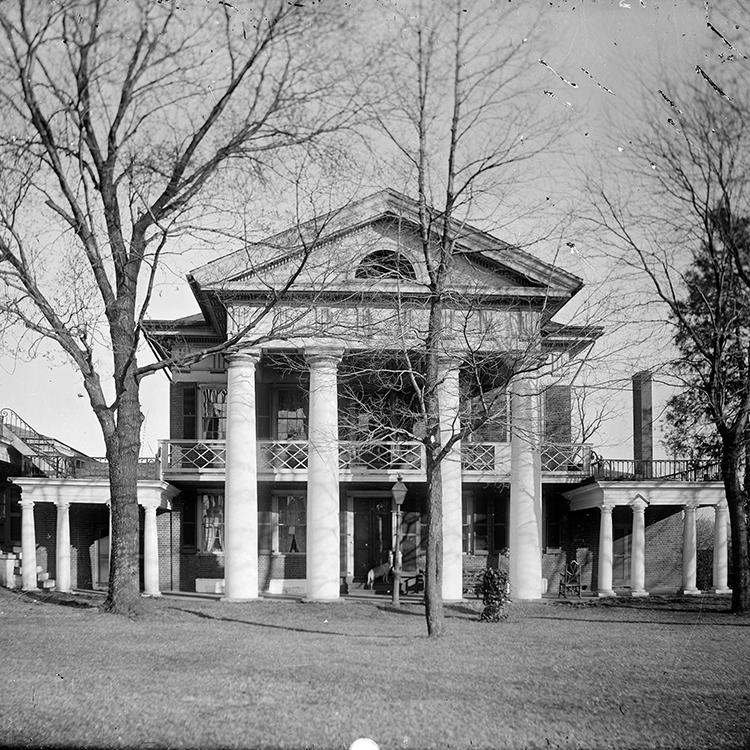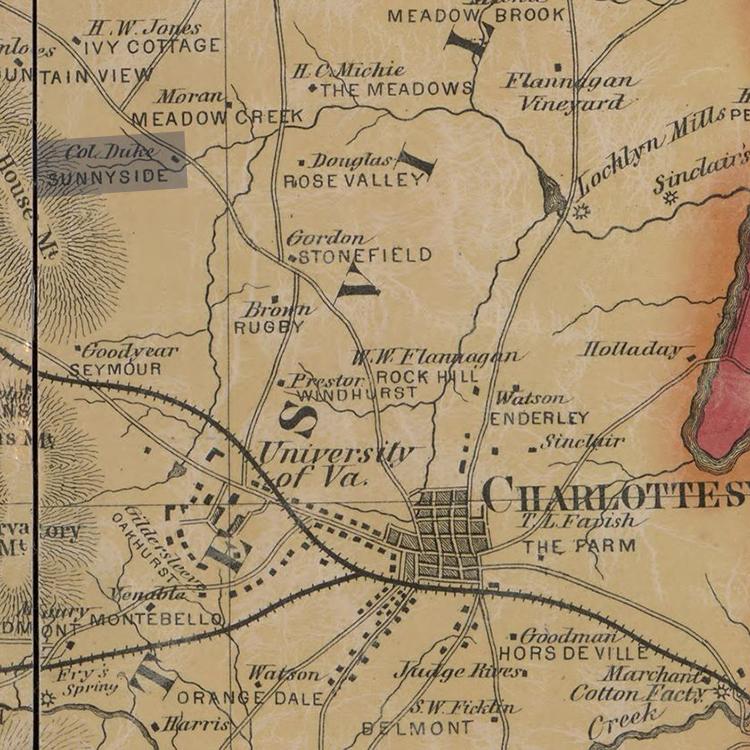Enslaved workers not only constructed Pavilions III and X—the original homes and classrooms of UVA Law’s first professors—they lived in and around those same spaces. Their daily lives were inextricably linked to their enslavers, and their presence is an equal part of the historical landscape and soundscape as Law faculty and students.
While Sunnyside—the current location of North Grounds—became a part of UVA Law’s legacy when the University purchased the property to construct the current Law School in 1963, UVA Law Library Special Collections is as equally committed to sharing the history of this property and of the enslaved community that lived and worked there as we are to the history of the Academical Village. Explore this page to learn more about the architectural history and cultural landscape of UVA Law’s buildings and properties before the Civil War.
North Grounds Historical Landscape
UVA purchased the Law School's current North Grounds site in 1963, when the tract was mainly woods. For centuries before that, the landscape was home to a long list of inhabitants, including farmers and enslaved laborers, the Albemarle County Poor House, and the Charlottesville barbecue grounds. Many of these sites are visible today from the Rivanna Trail. This video walking tour explores the history of the landscape on which the Law School now sits.
Pavilion III
Pavilion III was the second pavilion enslaved laborers built on the Lawn, completed in 1823. UVA’s first Law professor, John Tayloe Lomax, moved into the building in 1826 along with his family and enslaved workers. During Lomax’s short tenure, he expanded the pavilion by constructing “The Mews,” an adjacent outbuilding that served as a kitchen and quarters for enslaved people that still stands today.
Pavilion X
UVA’s second Law professor, John A. G. Davis, moved into the larger Pavilion X in 1833 with his family and enslaved workers. His residence began a century-long legacy of Law professor occupancy in the pavilion. With each resident family, Pavilion X underwent structural modifications to appease the individual tastes of its occupants and accommodate large enslaved communities.
Sunnyside
The former Sunnyside property sits on the land now occupied by the UVA Law School. Throughout the 19th century, multiple families lived on and farmed the property with the help of enslaved labor. Charlottesville’s first Poor House was located on the property. The Duke Family purchased Sunnyside in 1863 and enslaved at least 11 individuals who lived and worked there. UVA bought Sunnyside in 1963.




